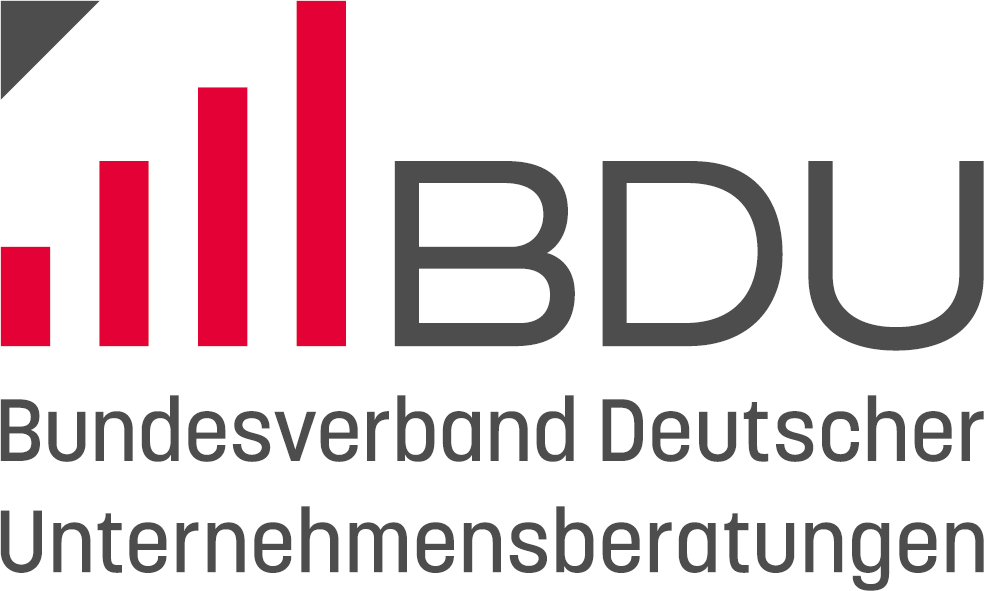The Future of Systems Engineering

It is used everywhere complex systems like astronautics, telecommunication systems and many more need to be designed. Systems Engineering has come a long way since its first major commercial use in the 1940s. According to future INCOSE President Ralf Hartmann though, its origins date back even further. He is convinced that the builders of the pyramids already applied Systems Engineering principles – even if they were not aware of that.
Today companies in almost all sectors use Systems Engineering. It has become the de facto standard for the development of safety-related systems in large-scale transportation and infrastructure projects.
"Systems Engineering is the interdisciplinary approach of developing complex systems along the full life cycle, which means especially that I’m not focusing on the engineering phase alone. I’m considering the full life cycle to production, to usage and to out of service phase that is very important.” Ralf Hartmann, INCOSE President-Elect
New industrial developments are becoming more and more complex and customer requirements are growing along with them. Many special disciplines in product development overlap with the different areas of Systems Engineering. Software development, reliability engineering, information security, risk management and interface design are some of the individual fields that all contribute to the successful development of sophisticated systems.
So what does this mean for the future? How will Systems Engineering meet the rising demands of increasingly complicated structures? In an expert discussion Ralf Hartmann talked with Dr. Armin Schulz, Founder and Managing Partner of 3DSE, about the origin and future of Systems Engineering and INCOSE. They examined the key challenges and the path toward the future. Ralf Hartmann also explained the current Systems Engineering Vision 2035 and its importance for the path to modern and effective Systems Engineering.
Origin of Systems Engineering and INCOSE
Systems Engineering as we know it today has been brought in around the first half of the 20th century, according to Ralf Hartmann. At that time, big, complex programs like the space exploration mission were in the planning phase and people realized that successful completion required a new approach.
At first, it was very much about focusing on the life cycle of development processes, getting them formalized and recognizing that involving hundreds of people from different disciplines in a complex project demanded a very rigorous documentation process and major reviews to check the progress at various levels. This is now perceived as the old traditional style of Systems Engineering.
The process of evolving into a more modern type of Systems Engineering initially focused on acceleration and expansion. This turned into very heavy processes which in turn led to very standardized processes.
“In the meantime, we have ISO standards related to Systems Engineering life cycle processes that require significant formal execution and documentation and so on.”
Numerous new industries came up and some of the applications in other domains like the automotive industry became more complex. The spectrum of disciplines no longer dealt only with metal and motors but grew to include electronics and software. All involved processes became more and more complex. Along the way there was a significant breakthrough – the digital transformation which Ralf Hartmann believes is still in its infancy. For him there is a lot that still needs to be done.
This evolution made people in industry, academia and government realize the importance of Systems Engineering as an essential element of their current and future projects. Professionals in California, USA, got together and founded the National Council on Systems Engineering (NCOSE) in 1990. The non-profit organization has since become the International Council on Systems Engineering (INCOSE) with about 17,000 corporate, individual and student members. It publishes various informative materials, organizes working groups and holds an international symposium every year. The goal of the professional society is to create and distribute information, encourage international collaboration and promote the profession of systems engineering. Ralf Hartmann has been with INCOSI since 1996. The self-proclaimed “enthusiastic” member is convinced that INCOSE is the only exclusive organization that deals with the definition evolution of Systems Engineering, the promotion of Systems Engineering in the world. In his mind, it is the guiding force – now and in the future.
Key challenges
In their expert talk, Ralf Hartmann explained the problems the industry faces during the evolution of Systems Engineering. His broader interpretation of Systems Engineering goes beyond the legacy understanding of the term and includes integration across all disciplines along the life cycle.
He stated that new industries with completely different business models now develop things much faster – a process defined as agile development. This new concept is about efficient processes that integrate people. In his view, the industry today is about the right integration between top-level processes and about embracing many agile streams in modern businesses and industries.
Ralf Hartmann is certain that parts of the industry probably don’t call it Systems Engineering, but that they apply (?) it. The important part here is not using the term Systems Engineering. It is combining successful processes with long-established system principles from the past, which to him is a core challenge. Another is the growing complexity of systems. Today’s products include dozens or even hundreds of microcomputers communicating with each other through software. Analog systems from about 50 years ago were fairly simple products by comparison.
Also, products are not considered by themselves anymore. They are part of the so-called “System of Systems” which includes the context of different systems communicating with each other. Ralf Hartmann defined this as an overall universe and ecosystem which, if used without a Systems Engineering approach, will make the development of products and systems difficult to manage and the consequences difficult to foresee. This, for him, is the major challenge – but also the major opportunity for all industries to apply Systems Engineering to those kinds of problems.
The future state
A team of leaders from the community has developed the Systems Engineering Vision 2035. They were assisted by representatives from industry, academia and government and the project was sponsored by INCOSE. It replaces the Vision 2025 which was published in 2014. The new version addresses subjects like the global context, the current and future state of Systems Engineering and ways to realize this vision through digital transformation, smart systems, sustainability and advancements in modeling, simulation and visualization. Vision 2035 is intended to guide the strategic direction of Systems Engineering for the global community. Its purpose is to assist in the development of strategies to evolve the Systems Engineering capability of enterprises or projects. Possible applications include a broad range of domains – from biomedical, defense and healthcare to energy, telecommunication, transportation and many more.
The fields of hydraulics, electrical engineering and software have already taken the step into the digital century. But systems engineering is lagging behind. After the transformation from piles of documents, it will need to enter a future that will be model-based. Ralf Hartmann explained that it is about having consistent formal models of the overall systems, the breakdown of those systems and the interfaces. He is sure that simulation will cover all of that, followed by appropriate impact analysis and specifically integration into all the existing domain models. For him, it is also about integrating all those model-based approaches from all disciplines into a single integrated set. The major challenge of the future is orchestrating a development process with all those disciplines along the life cycle. The systems engineering of today cannot provide this yet.
“I think the dramatic evolution will be in the way systems engineering is widening up as a discipline.”
Using smart cities as an example, Ralf Hartmann explained the holistic problem involving human beings and social aspects in terms of the technical issues of transportation, resources, waste and management of procurement. Assuming that most of the future population will be living in mega cities that include many aspects requiring consideration, Systems Engineering will contribute greatly to facing and solving those challenges.
Pathway towards future
In his expert talk, Ralf Hartmann explained that the Vision 2035 anticipates that the challenges are no longer in technical product development. They are in the global systems of systems and also encompass the megatrends of the future – societal challenges like searching for ways of surviving on this planet, issues like climate change. They are strongly laid out in the Vision 2035. Facing these elements requires moving the focus away from Systems Engineering on its own, to open up to other domains and be open to other approaches. Of course, the traditional domains of product development also have to be improved to be more efficient, among other things. But they have to be embedded in a more holistic approach.
“So artificial intelligence is part of the systems to be designed, but artificial intelligence is also an element that will help Systems Engineering and others to be more efficient.” All the achievements and artifacts of the digital century – data analytics, machine learning and artificial intelligence – will strongly impact the way Systems Engineering is used and applied. They will also strongly impact the systems that need to be pushed forward. For Ralf Hartmann, this is something that needs to be understood by politicians, social sciences and all those in the industry.
And from an education perspective, Systems Engineering must become part of the education in many disciplines.
“Engineering skills need to be part of everybody’s education.”
Systems engineers should not be the only ones involved in the development process. The issues must be translated into the languages and needs of various domains.
Closing thoughts
Summarizing his discussion with Dr. Armin Schulz, Ralf Hartmann stated that we are currently in the middle of two trends: The first one is the digital transformation which provides a challenge by simply increasing the mass if everything is digitalized. In his view, Systems Engineering is the only means to ensure that the various digital artifacts of the future interoperate in a reasonable process. The second trend indicates that the current types of systems are quickly enlarging. Going back to his example of smart cities, he fears that the industry will be overwhelmed. The only chance to successfully overcome these challenges lies in the holistic systems approach.
His advice to organizations was to put together smaller groups of people to help reengineer the whole set of processes and the complete set of ways of working and to provide them with education and methodological training. The key here, again, is the interdisciplinary approach, meaning that these people do not need technical skills alone. They must also be proficient in social skills and communication skills. They need to understand legal matters, sustainability aspects and security threats. He also recommended that the companies join and contribute to INCOSE and the Future of Systems Engineering initiative.
“Industry shall participate to make sure that their viewpoint, their systems, the needs of their customers, their legal environment and business environment are correctly considered to drive forward the elements of system engineering in the future. Otherwise, you will get an automotive-based approach applied to health care systems – and that will not work.”
He once again stressed the importance of the holistic approach pointing out that integration is not easy to manage because the various disciplines are unable to achieve that on their own. But he believes that if the disciplines come together and find ways to intermesh while making use of technical and digital advances, they will find the speed, the agility and the flexibility to overcome the new challenges.



